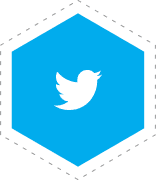Leading Through Organizational Change: A Guide for L&D Professionals—Part 2
Previously, we discussed how understanding and empathizing with the emotional rollercoaster employees face during organizational transitions presents a critical first step for L&D leaders in becoming effective change agents and strategic thought partners within their organizations. In the first article of this three-part series, “Understanding the Emotional Landscape of Organizational Change,” we dove into how feelings like resistance, anxiety, and even fear can emerge, and how crucial it is for L&D professionals to step in and acknowledge those emotions.
Now, we’ll consider the skills and knowledge gaps that can emerge during organizational change and how L&D can leverage training and communication to support employees through the change. The truth is, effective training is what truly ensures employees have the skills and knowledge to adapt to new roles, technologies, or processes. And alongside that, clear, honest communication is what builds the trust and alignment absolutely crucial for any change to succeed.
In this second article in the three-part series, we’ll delve into how L&D can strategically leverage training and communication to drive efficiency, productivity, and alignment during periods of organizational change.
Providing Tailored Training Programs
Organizational change often requires employees to adapt to new roles, technologies, processes, or all of the above . As L&D professionals, we play a central role in this evolution by ensuring that employees get the specialized training they need to meet these changes with confidence.
Why Tailored Training Matters
Tailored training programs are designed to meet the specific needs of employees during a period of change by addressing the skills gap that emerges when these changes are introduced. This targeted approach isn’t just efficient; it ensures that employees get exactly the right training when they need it most, maximizing its effectiveness and minimizing any disruption.
Examples of Tailored Training
Below are some common change scenarios and how training can support employees as they upskill in key areas of need:
- New software implementation: For a company implementing a new customer relationship management (CRM) system, L&D can develop training programs that cover the software’s features, functionalities, and workflows. This training might offer hands-on exercises in a safe “sandbox” environment, allowing employees to practice using the new software without fear of making mistakes in a live setting.
- Process changes: For a company restructuring its sales process, L&D can provide training on the new methodology, reporting procedures, and collaboration tools. This might involve role-playing scenarios, simulations, and analysis of case studies.
- New equipment or machinery: For a manufacturing or logistics company introducing new equipment, L&D can deliver technical training on operations, maintenance, and safety procedures to ensure that employees have the skills needed to work safely and efficiently with the new technology. Note: High-stakes, hands-on skilling needs like these can be great use cases for augmented, virtual, or mixed reality (AR, VR, or MR) learning experiences.
- Change resilience training: Beyond technical skills, change resilience training is invaluable. This type of training focuses on helping employees develop the emotional intelligence, adaptability, and ability they need to weather uncertainty and change. It empowers employees to navigate change with greater confidence and ease, reducing resistance and fostering a positive mindset.

Benefits of Tailored Training
Tailored training provides significant benefits for both employees and organizations:
- For employees, tailored training can help increase their confidence as they gain the knowledge and skills they need to succeed in the changed environment, thus reducing their stress and increasing their job satisfaction. By providing access to new, role- and business-relevant skills, targeted training also contributes to employees’ longer-term career growth.
- For organizations, the gains of tailored training include reduced errors, improved safety, and increased efficiency because well-trained employees are less likely to make mistakes and generally perform tasks more effectively. Furthermore, targeted training accelerates employees’ adoption of, and compliance with, new processes and technologies; minimizes downtime; and increases productivity—all of which add up to a positive return on training investment. There’s also an internal marketing advantage: Investing in training demonstrates a commitment to employee growth and development, which increases loyalty and retention over the long term.
Leveraging AI and Immersive Technologies for Enhanced Training
Leading-edge technologies like artificial intelligence (AI) and augmented, virtual, and mixed reality (AR, VR, and MR) are opening new frontiers in tailored training, particularly for complex or high-risk scenarios. (Discover how WebXR technology helps you bring the benefits of immersive learning to a globally distributed learner audience, with or without a headset.)
- AI-powered personalization: AI can analyze learner data to deliver incredibly personalized learning experiences and paths, constantly adapting the pace and content to each individual’s needs and skill levels. This ensures that employees focus on areas where they need the most support, maximizing training efficiency.
- VR for safe practice environments: VR creates immersive, simulated environments where employees can practice new skills without risk.
- For example, in a manufacturing setting undergoing a technological overhaul, VR can simulate the new production line, allowing technicians to interact with virtual machinery and troubleshoot potential issues before working with the real equipment.
- VR can also provide a safe space to practice de-escalation techniques in customer service scenarios or simulate emergency procedures in a power plant, enhancing preparedness and reducing the risk of errors.
SweetRush’s Approach to Training and Communicating for Change
Innovative technologies, when integrated into a holistic training strategy, can significantly enhance learning and skilling outcomes. Our approach to developing and implementing effective training programs encompasses both cutting-edge tools and foundational instructional design principles. Our strategic consulting services can help organizations:
- Conduct a thorough needs assessment to pinpoint performance gaps and business needs. We then work with L&D leaders and stakeholders to define the specific training requirements, analyze learner characteristics, and align training initiatives with overall change and business objectives. At this stage, we also identify KPIs and desired outcomes, as well as a measurement plan (see final bullet).
- Develop a comprehensive training strategy that encompasses a blend of learning modalities, including instructor-led training (ILT), microlearning, virtual training, simulations, social learning experiences, and immersive learning experiences, to cater to diverse learning needs and preferences.
- Design and develop custom learning solutions tailored to specific organizational, departmental, and learner needs that honor learner preferences and help to contextualize the organizational change, maximizing relevance and learner engagement.
- Measure the effectiveness of training programs using the KPIs identified at the needs analysis stage. This ongoing process leverages data analytics, feedback surveys, and performance metrics to make adjustments to the program and ensure continuous improvement and optimal return on investment.
Case Study: Enhancing Guest Service Skills with VR
To illustrate the value of leveraging immersive technologies to enhance the learning experience and drive organizational impact, consider our work with Hilton on their Guest Excellence Training.
The challenge:
Hilton sought to equip its hotel team members with the capability and confidence to effectively resolve common guest concerns using a problem-resolution model known as HEART. To avoid risking relationships with real guests, Hilton’s innovative L&D team recognized the need for a safe practice space where team members could develop these skills.
The solution:
With longtime partner SweetRush, Hilton’s L&D team developed an AI-powered immersive coaching experience featuring diverse, realistic digital guest avatars in different areas of a Hilton property. (Thanks to WebXR technology, learners may access the experience via either a headset or web browser on any desktop, laptop, or mobile device.)
- Learners listen as digital “guests” voice their concerns, then respond by speaking aloud into their microphones.
- On the back end, the AI engine “listens” and evaluates their response against a HEART rubric. (It’s been trained by Hilton hospitality experts through hundreds of interactions to recognize examples and nonexamples of HEART application.)
- Each digital guest reacts to the learner’s attempt to resolve their problem: If the learner has successfully implemented the HEART model, the digital guest accepts the resolution and thanks the learner. If the learner has only partially implemented HEART, the guest’s reaction is neutral or disappointed.
- The learner then receives personalized feedback on the learner’s performance of each step of the HEART model, recapping each point of success and opportunity to improve.
- Learners can then re-attempt the scenario, select a different scenario, or exit the experience. Learners can return anytime to this on-demand practice space to build their competence.
The impact:
By creating training focused on the most common (and critical) guest concerns, Hilton’s L&D team ensures that its global family of hotel team members have the skills and knowledge to resolve issues and boost guest satisfaction—a vital competence for both learners and the organization.
Facilitating Communication and Transparency
Communication is another critical element in managing organizational change. L&D plays a key role in facilitating communication and promoting transparency throughout the organization.
L&D can really shine here by creating essential change resources, such as straightforward FAQs (frequently asked questions), practical how-to guides, and engaging eLearning experiences—all designed to keep employees in the loop and address any questions they might have. L&D can also partner with leadership to ensure consistent messaging across all levels of the organization, bridging any communication gaps.
Why Communication and Transparency Matter
Clear and transparent communication is essential for managing employee expectations, building trust, and ensuring alignment during organizational change. It provides employees with the information they need to understand the change, its impact on them, and how to adapt successfully.
Examples of Change Resources
- FAQs: L&D can develop comprehensive FAQs that address common employee questions about the reasons for the change, the timeline, impact on roles, and available support. For example, during a merger, employees might have questions about job security, benefits, and company culture. A well-crafted FAQ document can provide clear and consistent answers, reducing anxiety and preventing the spread of rumors.
- How-to guides: When new processes or technologies are introduced, how-to guides offer step-by-step instructions, ensuring employees can adapt quickly and efficiently. For instance, if a company implements a new project management system, L&D can create guides that explain how to use the software, submit reports, and collaborate with team members.
- eLearning: eLearning experiences can provide in-depth information about the change, explain the rationale behind it, and allow employees to learn at their own pace. For example, if an organization is adopting a new customer service approach, L&D can develop a module that outlines the new principles, demonstrates effective communication techniques, and provides opportunities for practice through simulations.
- Videos: Short, engaging videos can be a powerful way to communicate key messages, introduce new leaders, or highlight success stories related to the change. A company undergoing a rebranding, for example, might use a video to showcase the new brand identity, explain the values it represents, and generate excitement among employees.
- Intranets/communication platforms: L&D can collaborate with IT to create or enhance intranets or other communication platforms to serve as a central hub for change-related information, updates, and discussions. These platforms can include announcements, documents, forums, and Q&A sections, fostering dialogue and keeping employees connected.
The Importance of Partnership with Leadership
Effective communication during change requires a strong partnership between L&D and organizational leadership—it’s essential.
- Consistent messaging: L&D can work with leaders to develop consistent messaging that is shared across all levels of the organization. This ensures that everyone receives the same information, preventing confusion and misalignment. For example, if a company is restructuring, it’s crucial that managers, supervisors, and executives all communicate the reasons for the restructuring and its impact in a consistent way.
- Training for managers: L&D can provide training to managers on how to communicate effectively with their teams during times of change. This training can cover topics such as active listening, empathy, providing clear explanations, and addressing concerns. Managers play a vital role in cascading information and supporting their teams, so equipping them with strong communication skills is essential.
- Feedback mechanisms: L&D can help establish feedback mechanisms to gather employee input and address concerns throughout the change process. These can include surveys, focus groups, online forums, or regular meetings. By actively seeking out and responding to feedback, organizations can demonstrate that they value employee perspectives and are committed to making the change as smooth as possible.
Benefits of Effective Communication
Effective communication before, during, and after change initiatives helps to maintain productivity and employees’ connection to the organization. Great communication:
- Builds trust: Transparent communication fosters trust between employees and leadership, making employees more likely to embrace change.
- Reduces anxiety: Keeping employees informed reduces uncertainty and anxiety, minimizing resistance and promoting a sense of security.
- Ensures alignment: Clear communication ensures that all employees understand the goals of the change and their role in achieving them, fostering a shared sense of purpose.
- Prevents misinformation: Proactive communication helps to dispel rumors and prevent the spread of inaccurate information, maintaining stability and focus.
- Maintains productivity: By minimizing disruption and keeping employees focused, effective communication helps to maintain productivity throughout the change process.
- Achieves change goals: Ultimately, clear and consistent communication increases the likelihood of successful change implementation and the achievement of desired outcomes.
SweetRush’s Approach to Communication
A vendor-partner with end-to-end consulting services can help you develop and implement comprehensive communication plans that support organizational change initiatives. To ensure that your change communication strategy is holistic and effective, we recommend partnering with a vendor who has the following capabilities:
- Developing a holistic communication plan: Creating a strategic plan that outlines communication objectives, target audiences, key messages, channels, and timelines.
- Identifying key stakeholders: Analyzing the different groups of people affected by the change and tailoring communication strategies to their specific needs and concerns.
- Tailoring communication strategies: Choosing the most effective communication methods for each audience, considering factors such as their preferences, access to technology, and the complexity of the information.
- Establishing feedback mechanisms: Implementing systems for gathering employee feedback, such as surveys, focus groups, or online forums, to monitor communication effectiveness and address employee concerns promptly.
- Creating communication materials: Designing and developing engaging communication materials, such as videos, infographics, and interactive PDFs, to support the communication plan.
- Designing communication platforms: Developing or customizing communication platforms, such as intranets or collaboration tools, to facilitate information sharing and dialogue.
Case Study: Supporting a Global Sustainability Campaign
To illustrate SweetRush’s expertise in developing communication solutions for organizational change, consider our work with a global corporation on its sustainability campaign.
The challenge:
A global corporation needed to inform its employees of its sustainability commitments and strategic focus and inspire their engagement in sustainability initiatives.
The solution:
SweetRush partnered with the corporation to craft a self-guided experience featuring a variety of resources and videos to communicate the company’s sustainability efforts to its globally distributed employees. The experience included:
- A custom-designed interactive platform
- Videos featuring business leaders and sustainability experts
- Content organized by theme, business line, and news
The impact:
The communication campaign effectively educated and engaged employees around the world, fostering a greater understanding of the company’s sustainability goals and encouraging participation in related initiatives.
By prioritizing this level of clear and transparent communication, L&D can play a vital role in ensuring that organizational changes are understood, embraced, and successfully implemented. This strategy helps organizations build trust, reduce anxiety, ensure alignment, and prevent misinformation—all essential outcomes for maintaining productivity and achieving change goals.
A holistic communication plan should include a campaign for timely, consistent, and transparent messages. The planning process begins with identifying key stakeholders and tailoring communication strategies to their specific needs and includes establishing feedback mechanisms to monitor communication effectiveness and address employee concerns.
At SweetRush, it’s our pleasure to support L&D and talent leaders and stakeholders to craft communication and learning strategies that keep humans at their heart. Our award-winning custom content expertise spans learning and skilling, communications, internal marketing initiatives, and more. If you’d like a thought partner to help you craft your plan, we’d love to talk shop!
The L&D Opportunity: Supporting Organizational Change through Training and Communication
Training and communication are powerful tools L&D professionals can use to support employees through organizational change. By providing tailored training programs and facilitating clear and transparent communication, L&D teams can help senior leadership equip employees with the skills and information they need to adapt and thrive in the changing workplace environment.
To help you further evaluate the current readiness of your organization’s training and communications processes and practices to support change initiatives, we encourage you to download the Change Readiness Checklist.
If you’d like to understand more about the emotional landscape of change, revisit the first installment of the Leading Through Organizational Change series, which offers models and practical strategies for L&D to support employees emotionally during change initiatives. In the third installment, we will move on to explore the critical role of managers in leading their teams through change and how L&D can empower them to be effective change leaders.
Is your organization facing a change management challenge all on its own? Reach out to chat about opportunities to drive business growth and support your leadership, managers, and teams with our proven strategic consulting approach to change management.
Looking for more on how L&D leaders and teams can support leaders, managers, and employees through change initiatives? Check out these related articles in our Leading Through Organizational Change series:




